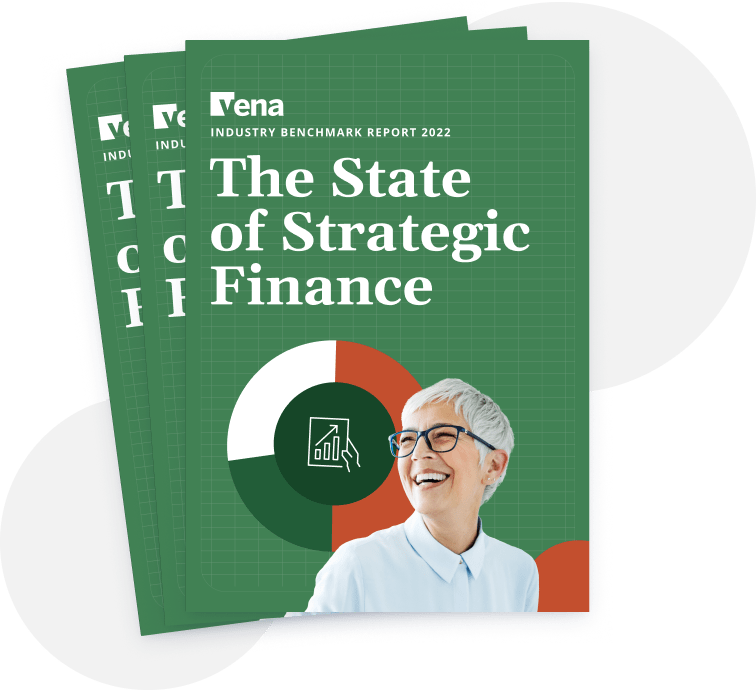Modern Finance
Scenario Analysis vs. Sensitivity Analysis: What’s the Difference and When To Use Each
Learn all about the difference between scenario vs. sensitivity analysis, including examples and when to use each method.

According to Vena’s 2022 Industry Benchmark Report, 55% of companies do not currently use scenario analysis before making forecasting adjustments.
In other words: More than half of organizations are missing out on a significant opportunity to future-proof financial strategies and position themselves securely going forward.
It raises some questions, especially during this period of unprecedented change. If you don’t regularly test business plans against potential future scenarios, how can you ensure forecasts are as well-informed as possible? And without thoroughly analyzing what might happen in the future, how can you prepare for what does happen?
With business landscapes constantly evolving—especially regarding predictions as to whether there will or won’t be a recession on the horizon—companies must be ready for anything. That’s why scenario analysis is such an important aspect of effective, finance-led business planning.
By testing forecasts against a range of assumptions and business drivers (both internal and external) you can mitigate risk and better understand how the decisions you make today will impact your bottom line tomorrow.
And even though it’s impossible to prepare for every potential business outcome, analyzing multiple scenarios helps you identify your most variable KPIs, measure the influence of changes, and then factor that information into your business plans going forward.
In this guide, we’ll explore the full impact scenario analysis has on financial forecasting and actionable steps for implementing it at your organization.
Scenario analysis (also referred to as scenario planning) is a technique used to evaluate how various potential future scenarios would impact future financial outcomes should they come to fruition. It involves building multiple scenarios based on predictive analysis, then calculating the financial implications of each one.
Each scenario you build should be based on informed assumptions about your company’s financial performance, as well as external factors such as economic conditions, market trends and unexpected world events (like the pandemic, for example) that could affect the financial position of your business.
(For more on these steps in the process and a walk-through of how to build your scenarios, refer to our guide to scenario planning.)
Scenario analysis plays an essential role in financial forecasting by making it less static and more dynamic. Rather than forecasting one most likely outcome based on a standard internal dataset, scenario analysis looks at many scenarios based on a wider range of both internal and external factors.
As a result, your business leaders can use these scenarios to aid in decision making, develop more agile strategies and be responsive to changing market conditions.
With the growing presence of AI tools in FP&A, businesses will be able to see how these changes will impact their financial position in more or less real time.
While scenario analysis and financial forecasting have similar goals (predicting future performance based on current conditions), it’s important to understand the distinction between the two.
Forecasting focuses on using historical and present data to predict one future outcome, whereas scenario analysis focuses on predicting many possible outcomes based on one or a combinations of factors (it can use multiple variables at once).
Financial forecasting looks at the most likely outcome—a singular scenario predicted to be the most likely to happen. Scenario analysis, on the other hand, looks at every potential outcome, analyzes the factors that impact each one’s likelihood to occur, then tracks how changing market conditions may affect the likelihood of each scenario.
Scenario planning adds a much-needed dynamic element to financial forecasting when used in tandem with it.
Your scenario analysis will include many assumptions—but you can’t model for all of them at once. Start by creating dynamic financial models that allow you to switch out the variables you analyze to show how your organization could be impacted by many different outcomes.
For example: Your full-scale scenario planning might account for a long list of assumptions about sales growth, revenue, overhead expenses, interest rates, costs of goods sold, inventory costs, and depreciation and amortization. While all are important variables to look at, applying them all at once to your model will make it difficult to spot which variables are driving the most change.
Instead, you could perform a scenario analysis focused on sales growth and revenue, then another that analyzes interest rates, and still another that’s centered around COGS and inventory costs. When you’re using dynamic financial models, you don’t have to start from scratch for each analysis—you just plug in the variables you’re focusing on each time.
Depending on your company, industry and current external factors, some scenarios will be clearly more important to analyze than others.
Focus on variables most critical to your future business success. Know your goals for your scenario analysis and consider what needs to be included to accomplish those objectives.
For example: A large corporation opening several new facilities may be looking to predict potential overhead costs associated with different expansion plans. A new startup may be aiming to predict sales revenue based on various demand scenarios. Another company might need to plan for future production and marketing costs as they work to expand into a new market.
A scenario analysis typically accounts for best case, worst case, and average (or most likely) case. Determining what these outcomes mean for your business and planning how the company should react in each case is the best way to prepare for whatever might come your way.
It widens the scope of your strategy creation and enables decision makers to see beyond the straight-line of traditional forecasts.
You can do this most effectively in Excel with a what-if scenario analysis, through which you can add your assumptions and outputs, then build multiple scenarios using the scenario manager tool, and make your analysis viewable in a single snapshot by putting it into a table view.
Walk through the process step by step with Microsoft MVP Liam Bastick in the video below.
Scenario analysis is meant to drive strategic decision making and action. To get leaders across your organization engaged and involved, it helps to create a narrative around each potential scenario.
In other words: Tell a story about how your company would get to each scenario, what the impact would be on your organization and what actions need to be taken in the lead up to the potential outcome and afterward to keep your business successful.
Vena’s VP of FP&A, Muneerah Kanji, recently outlined just why this connection between raw data and business strategy is so critical at Excelerate Summit 2023:
“We live in a world where there's horrendous amounts of data out there,” she explained. “The trick for us is now to be able, not just to analyze the financial data we have, but to marry that up with the non-financial data to inform the business with insights and to do it in a timely basis.”
Data visualizations are extremely powerful tools for conveying the story behind the data and helping leaders connect this to strategic action. The best way to visualize your scenario analysis is by leveraging tools like Power BI—or better yet with a complete planning platform that unites all your data and has BI capabilities embedded within it.
If scenario analysis is meant to drive action, you need to plan for how it happens. To do this, create strategic action plans for each potential outcome you’ve uncovered.
For example: If you analyze your future sales volume in multiple demand-level scenarios for a new product launch, you should also determine how you’ll fill the revenue gap should the worst-case scenario play out.
If you’re analyzing revenue for your startup based on projected sales, you’ll want to plan for how you’ll budget to drive continued growth in each scenario. In the best case scenario, it may be a capital expenditure you’ll then have the funds to make, while the worst case scenario might require delaying the purchase and refocusing on bootstrapping growth.
As time goes on and real situations unfold, you’ll know more about what the future holds for your company. Be sure you revisit your scenario analysis and update data when you have it (i.e. interest rates go down, cost of inventory goes up, sales demand experiences a significant boost, or some other change occurs).
This is much easier to do when working out of a complete planning platform that integrates with your all your data sources (such as your ERP or GL, CRM and HRIS), as your actuals will get updated in your reports automatically.
When scenarios do change, reforecast and adjust your budget accordingly. Given the speed of change in today’s business world and the competitive demand to optimize your operations, reforecasting is something companies now do more frequently to stay agile in evolving market conditions.
Our CFO Melissa Howatson puts it aptly: “The current environment gives a little less time to sit and reflect. [You] need to be constantly leveraging that agile rolling forecasting and planning. You're also starting to focus on some shorter time horizons and needing to pivot accordingly more rapidly.”
With automated financial planning tools, you can connect these two key processes (scenario analysis and reforecasting) to achieve rolling forecasts that continuously update to give you a real-time view of the most likely outcome.
Uncertainty is, ironically, a certainty that every company must navigate—now perhaps more than any other time in the past.
Scenario analysis can’t eliminate that uncertainty, but it can help prepare you to make the most informed decision possible in every situation that arises.
The advantages of scenario analysis are clear—it:
Yet 55% of organizations still don’t use it. But, that also means companies that are using scenario modeling before making forecasting adjustments are set to obtain clear competitive advantages.
Those companies will have a more complete view of their own financial futures, be more resilient to changing market conditions and will be better equipped to build proactive strategies to stay profitable and drive reliable growth.
Did you find this article helpful? You might also enjoy this related content:

Find out what Vena's 2022 benchmark report revealed about how finance teams are faring across people, processes and technology.
As Senior Director of Content and Communications, Jonathan Paul leads content strategy and execution at Vena, overseeing the development of owned media and content experiences that help finance professionals fuel business health, as well as their personal and professional growth. When he's not dreaming up new ways to offer audiences value through content creation, Jonathan loves to lose himself in an immersive video game with a solid narrative, lose golf balls pretending to be good at golf and lose time dreaming about time travel.

